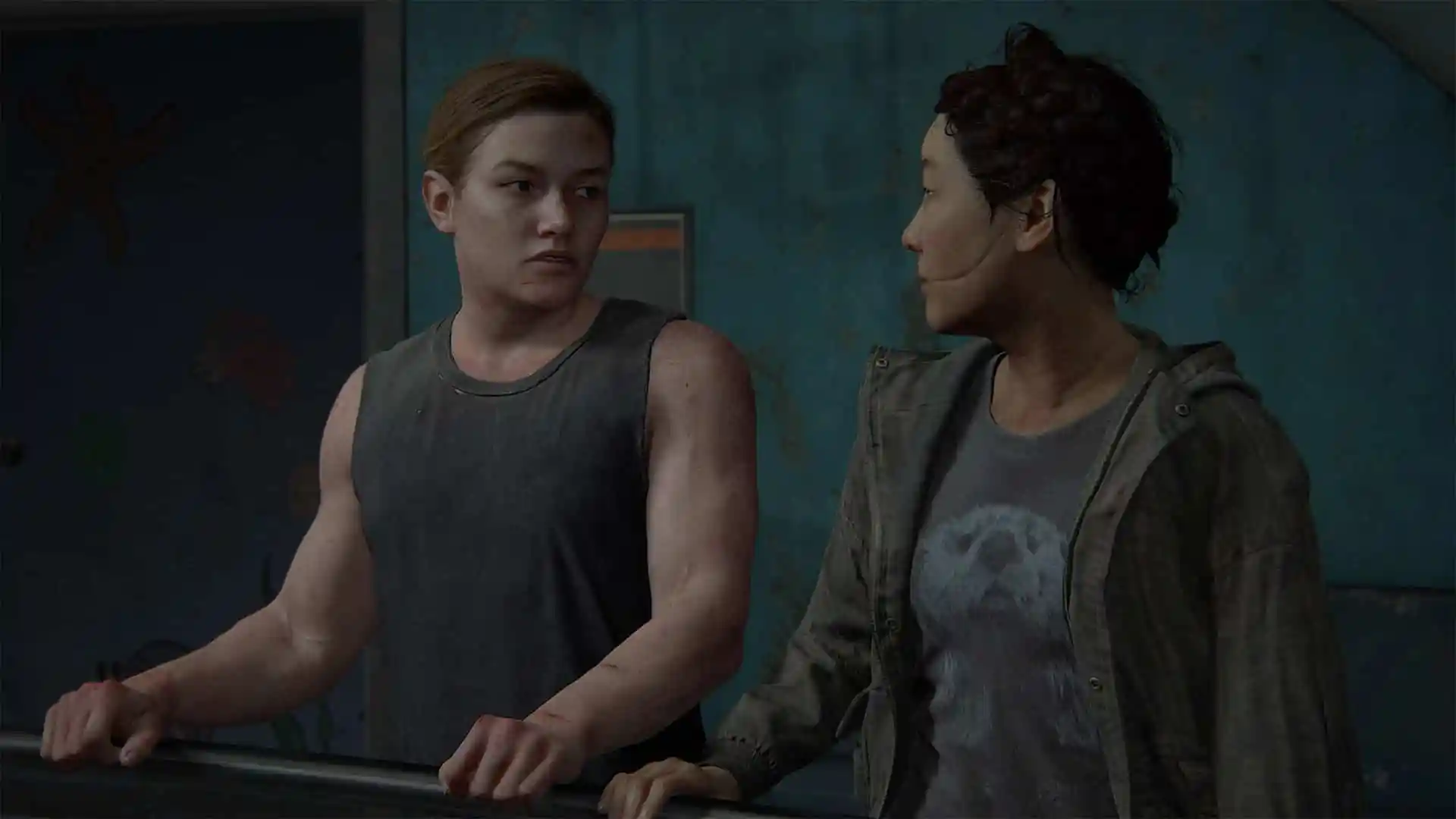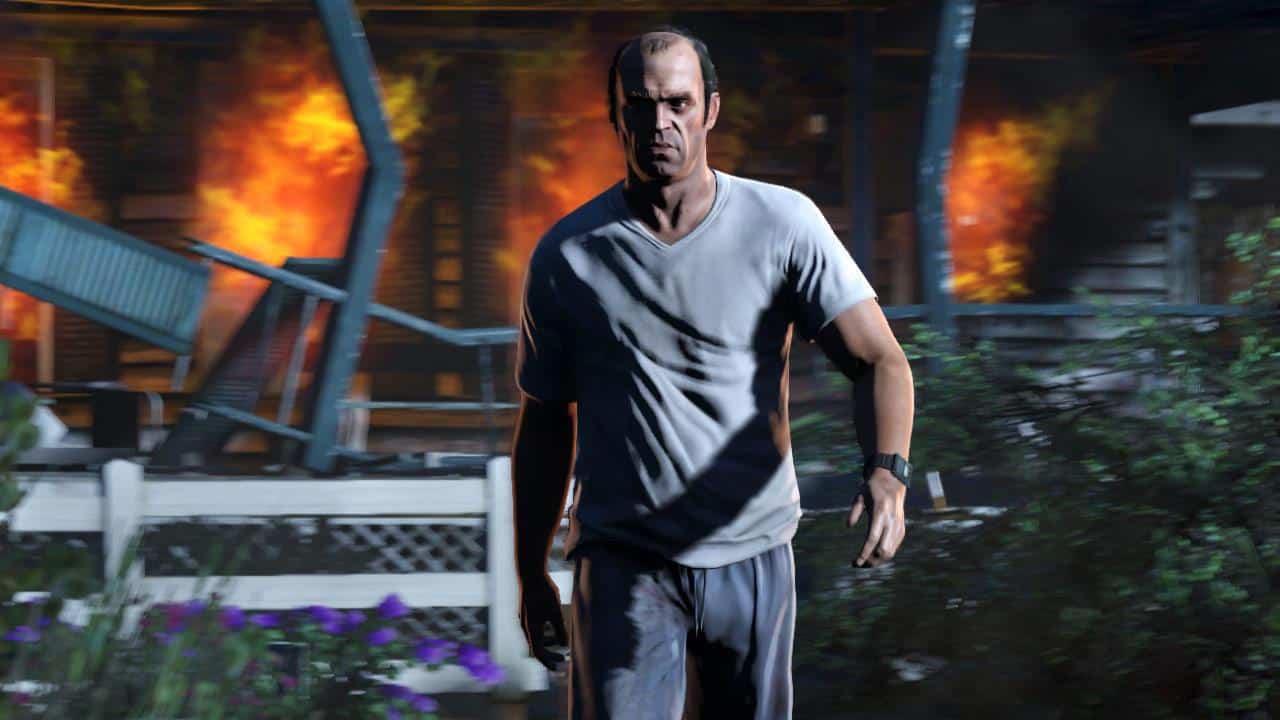How Grand Theft Auto V Avoided The Last of Us Part II’s Challenges with Multiple Protagonists
To say that Dignified Theft Machine V is a mercantile success would be an understatement. Almost cardinal years since its release, GTAV remains consistently one of the most played games on Steam and umpteen other platforms and has sold more than 140 million copies worldwide.
Given its popularity, it might atomic number 4 tempting to sniff at Grand Theft Auto V every bit the equivalent of a well-ready-made summer smash hit – enjoyable enough, only without the "literary" aspirations (Beaver State pretensions, depending on your point of view) of some its Abdominal aortic aneurysm coevals, like The Stopping point of Us or BioShock Infinite. Because of this, it give the sack glucinium easy to overlook that, all these years tardive, GTAV corpse a masterclass in how to weave video game communicatory around four-fold protagonists.
The problem is presented clearly enough by another summer blockbuster, free last class: The Last of Us Part II. Without getting into significant spoilers, the first 10-15 hours of the game are played As Ellie, the deuteragonist from The Last of America, as she brings violent vengeance happening those she believes to rich person wronged her. The latter 10-15 hours are played as Abby, one of the people Ellie is after.
The Last of Us Part II is united of the most divisive games in past memory, but this shift of perspectives was arguably its most controversial feature. There were more reasons for the controversy, from frustration about misleading trailers to in a flash misogynism, but for me the upsho was just the way the shift in perspectives was handled.

Legal brief prologue segment aside, too so much prison term was given to Ellie before shifting to Abby. Players had already developed a bond with Ellie through The High of Us, so ever-changing to Abby after thus long with Ellie became even more cacophonous. Books, TV shows, operating room films that successfully employ corps de ballet casts – A Song of Ice and Fire and its TV adaptation Game of Thrones, for object lesson – make a degree to cyclic on a regular basis 'tween their various protagonists. A a result, the cut from unrivaled standpoint to another is not every bit jarring; information technology is organic into the basic premise and tempo of the story.
It may look like there are obvious counterpoints to this line of business of reasoning. For example, in 2004, Anulus 2 caused disceptation for introducing the Arbiter as a second base protagonist. However, unlike The Finale of Us Function II, Ring 2 made sure to alternate sporadically between Master Top dog and the Arbiter, ne'er letting the participant control either for thirster than few hours at a time. And although I feel that this worked better than the body structure of Part II, I admit information technology wasn't entirely successful in juggling deuce protagonists.
I imagine one cause for this is, like with Ellie, we came to Glory 2 having already formed a human relationship with Master Chief over the course of Halo: Combat Evolved, and so it was difficult to build a new family relationship with a unaccustomed character. But there may be a more urbane explanation as well.

There is extensive inquiry that suggests the kinship players have with their in-game avatars is partly a function of the control players have o'er those avatars. The more control, the deeper the kinship. The language of video recording games can also bring on the audience into the narrative more directly than in other mediums. So information technology stands to reason that – completely other things being equal, course – players should sense a to a greater extent intimate connecter with their game avatar than with the protagonist of a Word of God, Tv set record, Beaver State film.
As a corollary, it follows that it should be inherently more troublesome to switch between protagonists in video games than in other narrative mediums. Even if Halo 2 does this better than The Lastly of Us Part II, ultimately some are workings against the ingrain of player psychology.
The mechanism that underlie Grand larceny Auto V advise that Rockstar recognized these issues, at least implicitly. GTAV introduced tercet protagonists – Franklin, Trevor, and Michael – complete the course of the premier few hours of the game. After that, it was possible to permutation betwixt them on the fly with the press of a release. Certain missions were specific to a character but could be tackled in roughly any enjoin. And the three characters periodically showed up in each other's missions, specially during the game's heists – show-stopper set pieces that necessary the player to frequently electric switch between Franklin, Trevor, and Michael in set up to progress.

IT was an incredible technological accomplishment on the aging Xbox 360 and PlayStation 3 ironware, but more importantly, it enabled Grand Theft Auto V to master the other aforesaid issues with multiple protagonists. The fact that John Hope Franklin, Trevor, and Michael were only ever a button press departed helped to further a sense of see to it ended them, thereby helping to build the musician's relationship with each one. Being involuntary to switch between them every few missions broke up what would otherwise be long stretches of narrative as rightful one of them. And the way Franklin, Trevor, and Michael showed up in each other's missions and had equal playable parts during heists emphasized the sense that complete three were equally important to the history and honored of emotional investment.
More than that, it has been frequently remarked that Franklin, Trevor, and Michael represent three generations of GTA games, or three different but complementary styles of GTA players – there is symmetric a theory that Franklin, Trevor, and Michael Crataegus laevigata glucinium a single composite character. As a result, Grand larceny Auto V also has a sensory faculty of a metanarrative to tie together the trine individual stories.
Of course, I am non suggesting that Grand larceny Auto V's social organization could have been transplanted to The Last of Us Part II OR strange games that scramble to accommodate multiple protagonists. Nor am I suggesting that GTAV has a perfect body structure. The breaker point is rather that Rockstar seemed to pick out the unique challenges quintuple protagonists raise for television games and found a solution specific to its back – even going out of its direction to apply a technologically demanding solution. Few studios have the kind of resources available to Rockstar, but then few studios attempt games as technologically up-to-date as The Last of Us Part II. What would it take in been like, I enquire, if a big lump of that AAA budget were channeled into concepting and playtesting the story beats?
Source: https://www.escapistmagazine.com/grand-theft-auto-v-protagonist-perspective-shift-the-last-of-us-part-ii/
0 Response to "How Grand Theft Auto V Avoided The Last of Us Part II’s Challenges with Multiple Protagonists"
Post a Comment